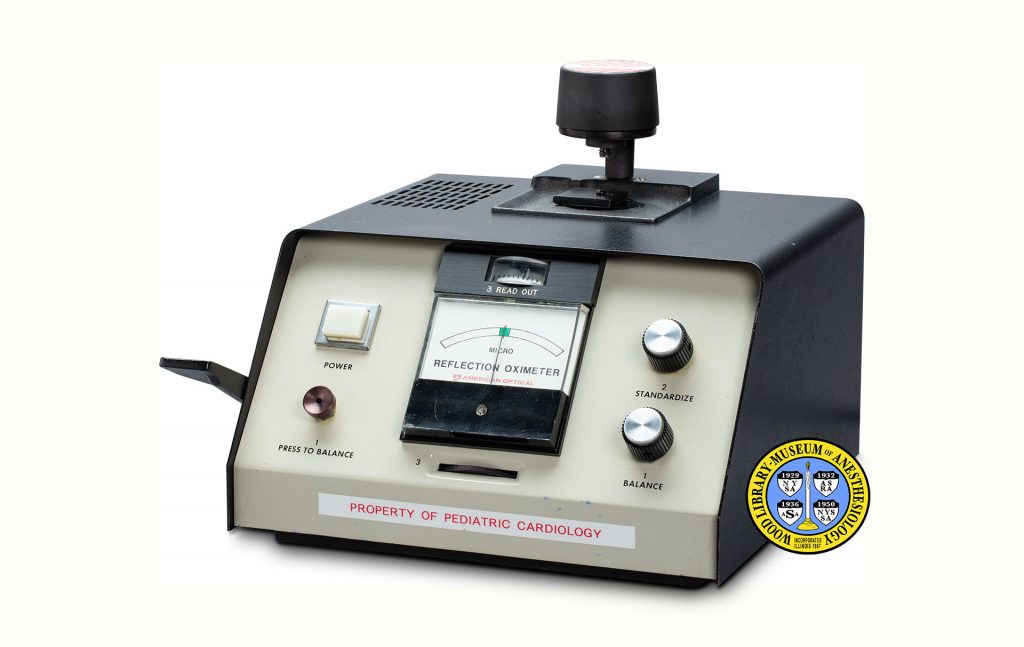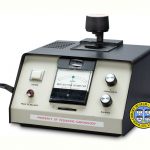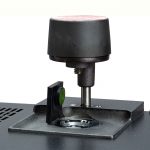AO Reflection Oximeter
Anesthesiologists are responsible for monitoring the patient's vital signs, including respiration, and managing the patient's body fluids during surgery. The amount of oxygen in the patient's blood (oxygen saturation, abbreviated SaO2) is an excellent indicator of how well he or she is breathing. From the late 19th to the mid-20th Centuries, most instruments for the determination of SaO2 required taking a sample of the patient's blood.
Founded in Southbridge, Massachusetts in 1826, American Optical Company (AO) became one of the largest optical manufacturers in the world. The AO Macro Oximeter II and AO Micro Oximeter II were marketed in the 1970s. These were reflecting oximeters (also called reflectance or reflection oximeters). Each used beams of light in two different wavelengths to determine the SaO2 of a blood sample. The Micro Oximeter II, shown here, required only a 0.2 milliliter sample, and was intended for pediatric patients and cases in which only capillary blood could be drawn.
The AO Oximeters could be used at the patient's bedside. They were advertised as providing "absolute" accuracy, independent of the various factors that could influence reflection oximeter readings, such as the density and temperature of the blood sample. Another selling point was speed; the results were returned in 20 seconds or less. Computerized pulse oximeters were introduced in the early 1980s.
Catalog Record: AO Reflection Oximeter Contact [email protected] for catalog record.



